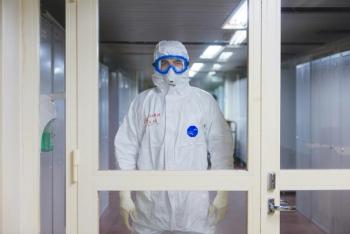
Asymptomatic C diff Carriers Prevalent Among Admitted Hospital Patients
Some asymptomatic carriers of C diff went on to have clinical infection themselves within a 6-month period.
Asymptomatic carriers of Clostridioides difficile (C diff) can spread the infection through hospital settings and some even go on to have clinical infection, according to a new report published in
Investigators from Montefiore Medical Center in the Bronx established a pilot screening program in order to estimate the prevalence of C diff carriage as well as the risk and speed of progression to symptoms among carriers. The investigators collected a sample from admitted adults without diarrhea as well as samples from nursing facility patients in an 800-bed, tertiary care, academic medical center in an urban setting between July 2017 and March 2018. The perirectal swabs were tested for C diff within 24 hours of hospital admission. Additionally, patients were followed for progression from asymptomatic to symptomatic C diff.
However, many patients with C diff may not have diarrhea, the study authors wrote. These patients carrying C diff, therefore, are not routinely identified upon hospital admission, and can therefore spread C diff throughout the facility. These patients may shed spores that can contaminate environmental surfaces even in the absence of symptoms such as diarrhea.
From 220 enrolled participants, the investigators said that 54% were female, two-thirds were aged 65 years or older, and 76% were nursing facility residents.
Nearly 10% of these participants were asymptomatic C diff carriers. A further breakdown revealed that this included 17 of 168 nursing facility residents as well as 4 of 52 community residents tested; although the study authors wrote that this was not a significant difference (10.2% compared to 7.7%, respectively).
Of these asymptomatic carriers, 40% went on to have clinical C diff infection within the subsequent 6-month period. Only 4 patients who were not carriers at the time of study enrollment went on to have C diff in the same period, the study authors noted.
“This was completely shocking to us when we finally saw the numbers,” Sarah Baron, MD, MS, director of inpatient quality improvement in the Department of Medicine in Montefiore Health System and assistant professor of medicine at Albert Einstein College of Medicine, and lead study author, told Contagion®. “We knew these patients had previously been exposed to C diff because they were carriers, they were definitely a sick group (they were admitted to the hospital after all), and we knew that they could potentially go on to have symptomatic C diff, but we had no idea that such a large proportion of them would be diagnosed.”
Baron continued by saying that these findings present larger questions, such as: Should hospitals be screening more broadly, or using sporicidal cleaning agents more broadly, or isolate patients differently? She acknowledged not knowing the answers to these questions yet, and said the answers would involve more research.
“At first glance the study suggests that we might routinely screen our admitted patients to determine who is a carrier and therefore at increased risk for future C diff,” Baron said. “As we know from some other research, this might be possible, but it’s not clear that a whole-house screening effort would be most effective or efficient.”
Instead, the hope is that physicians can become more comfortable with the idea that asymptomatic C diff is a possibility after understanding these findings — and not that these findings lead to increased screenings and “unnecessary overtreatment of carriers. We all know that would lead to even more issues,” Baron said.
By identifying the asymptomatic carriers, the study authors believe it’s even possible to change the definition of “health care-facility onset” C diff, diagnosed 3 or more days following hospital admission. For example, C diff bacteria may not be acquired in the hospital but instead was present upon admission. It’s possible that the diarrhea began only in the hospital.
“I am optimistic that these findings will help shed light on the extremely difficult job of infection prevention and control and antimicrobial stewardship teams,” Baron added. “Like so many infections, C diff is not as straightforward as we once thought… Our administrators will be extremely important in that conversation as they often help with these metrics, support quality improvement efforts, and open communication with federal and state agencies.”
Newsletter
Stay ahead of emerging infectious disease threats with expert insights and breaking research. Subscribe now to get updates delivered straight to your inbox.






















































































































































































































































































































